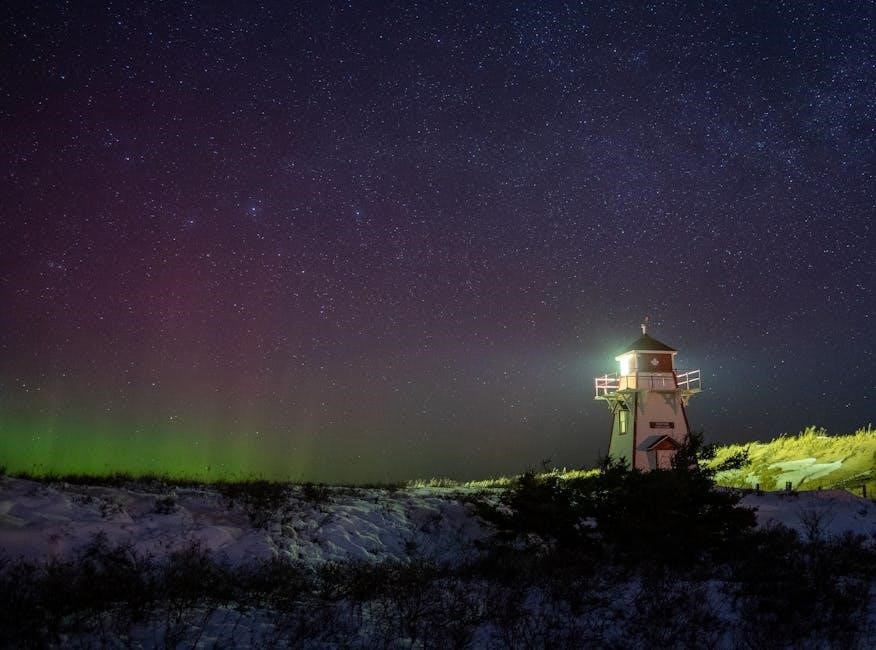
stronghold builder’s guide
Stronghold Builder’s Guide: A Comprehensive Overview (Updated 11/26/2025)
Today’s date is 11/26/2025 03:35:55. This guide details finding, navigating, and even constructing strongholds – crucial for accessing the End and defeating the Ender Dragon.
What is a Stronghold?
Strongholds are expansive, naturally generated underground structures found within Minecraft worlds. They represent ancient, fortified complexes built by a mysterious, long-vanished civilization. These structures are uniquely important because they invariably contain an End Portal – the sole gateway to the End dimension, where players confront the Ender Dragon.
Unlike typical dungeons or mineshafts, strongholds aren’t simply random cave systems. They possess a deliberate, complex layout featuring interconnected corridors, rooms with distinct purposes, and a generally imposing architectural style. Multiple strongholds can exist within a single world, offering players several opportunities to locate and utilize the End Portal. Discovering a stronghold is a pivotal moment in a Minecraft playthrough, signifying progression towards the game’s ultimate challenge.
The Importance of Strongholds
Strongholds are fundamentally important in Minecraft as they are the only means of accessing the End dimension. Without locating and activating an End Portal within a stronghold, players cannot challenge and defeat the Ender Dragon, effectively preventing completion of the game’s main storyline. Beyond simply enabling access to the End, strongholds also present a unique set of challenges and rewards.
These subterranean complexes are often guarded by silverfish, a hostile mob that spawns from infested blocks, adding a layer of danger to exploration. Furthermore, strongholds frequently contain valuable loot within their storage rooms and libraries. Successfully navigating a stronghold requires careful planning, resourcefulness, and a willingness to confront its inherent dangers, making them a crucial milestone for any Minecraft adventurer.

Locating Strongholds

Finding strongholds in Minecraft isn’t a straightforward task, as they generate randomly and are hidden beneath the surface. Players typically begin their search by acquiring Eyes of Ender, crafted from Ender Pearls and Blaze Powder. These eyes are then used to locate the nearest stronghold by right-clicking to launch them into the air; they will travel in the direction of the closest stronghold.
Following the path of the Eyes of Ender requires patience, as they don’t lead directly to the stronghold but rather indicate its general direction. Several strongholds can exist within a single world, adding to the complexity. Utilizing external tools like Chunkbase or dedicated stronghold finder websites can significantly streamline the process, providing potential coordinates based on your world seed.

Using Eyes of Ender
Eyes of Ender are paramount for locating strongholds. Crafted by combining an Ender Pearl, dropped by Endermen, with Blaze Powder, obtained from the Nether, these items serve as your compass. To use them, equip the Eye and right-click – it will launch into the air, traveling in the direction of the nearest stronghold.
The eye will fly a considerable distance before falling, and sometimes breaks upon impact. Follow its trajectory, repeatedly launching new Eyes to maintain the path. As you approach the stronghold, the eyes will descend more frequently, indicating you’re getting closer. Be prepared to travel long distances, and remember to bring a sufficient quantity of Eyes!
Understanding Eye of Ender Behavior
The behavior of Eyes of Ender isn’t always straightforward. They don’t point directly at the stronghold, but rather towards the general area where the stronghold is located, often several chunks away. Expect a degree of lateral movement as you follow their path, especially when nearing the destination.
Eyes can also break upon impact with surfaces, so conserve them. They are more likely to break when traveling long distances or encountering obstacles. Furthermore, multiple strongholds can exist within a single world, and the Eye will lead to the closest one. Understanding these nuances will significantly improve your stronghold hunting efficiency.
Chunkbase and Stronghold Finder Tools
For players seeking a more direct approach, websites like Chunkbase offer stronghold finder tools. These tools utilize your world seed to generate a map displaying potential stronghold locations. While not always 100% accurate due to world generation complexities, they provide a substantial head start compared to relying solely on Eyes of Ender.
Remember to input your seed correctly! These tools require the exact seed used when creating your world. They can save considerable time and effort, especially in larger worlds. However, the thrill of discovery is diminished, so consider if you prefer a more organic exploration experience.
Stronghold Structure and Layout
Strongholds aren’t randomly generated; they follow a distinct, albeit complex, structural pattern. Expect a sprawling network of interconnected corridors, rooms, and staircases built primarily from stone brick. These underground complexes are characterized by long, winding passages and frequent dead ends, making navigation challenging.
Within a stronghold, you’ll encounter various room types, each serving a different purpose. Common rooms include libraries filled with bookshelves, storage rooms containing chests, prison cells, and altar rooms. The ultimate goal, of course, is locating the End Portal Room, but reaching it requires careful exploration and map-making.
Common Room Types
Strongholds feature diverse room types, each with unique characteristics. Libraries are easily identified by their extensive bookshelves, often containing enchanted books and paper. Storage Rooms hold chests with varying loot, from basic supplies to valuable items like diamonds and gold. Prison Cells, typically small and cramped, add to the stronghold’s eerie atmosphere.
Altar Rooms are distinctive due to their central altar structure, sometimes surrounded by mossy cobblestone. These rooms often feel more ceremonial and less utilitarian. Beyond these, you may find smaller, less defined rooms serving as junctions or dead ends within the stronghold’s labyrinthine layout. Recognizing these rooms aids in navigation.
Libraries
Stronghold libraries are iconic chambers, densely packed with bookshelves stretching from floor to ceiling. These aren’t merely decorative; they frequently contain enchanted books, offering valuable magical enhancements to players. Paper is also a common find, essential for creating maps and repairing books. The sheer volume of bookshelves creates a distinctive, scholarly atmosphere.
Builders replicating libraries should prioritize density and variation in bookshelf placement. Incorporate occasional gaps and slightly damaged books to enhance realism. Libraries often connect to other rooms via narrow corridors, making them central hubs within the stronghold’s network. Careful exploration is key to uncovering all their secrets.
Storage Rooms
Stronghold storage rooms are utilitarian spaces, designed to hold a variety of resources. These rooms typically feature numerous chests, often containing items like wheat, bread, iron ingots, and occasionally, even valuable diamonds. While not as visually striking as libraries or altar rooms, storage rooms are vital for resource gathering during a stronghold exploration.
When building storage rooms, focus on creating a cluttered, disorganized appearance. Vary the contents of each chest and include broken or empty containers to suggest long-term use. Connecting these rooms with winding corridors adds to the sense of a sprawling, functional complex. Don’t underestimate their importance for survival!

Prison Cells
Stronghold prison cells are grim, often small chambers featuring iron bars and stone brick construction. These areas hint at a past history of captivity within the stronghold, though they are rarely populated by any current inhabitants – except, perhaps, silverfish. They contribute to the overall mysterious and somewhat unsettling atmosphere of the stronghold.
When replicating prison cells, prioritize a claustrophobic feel. Use iron bars to create individual cells and add details like hay bales or broken wooden furniture to suggest former occupants. Vary the cell sizes and arrangements to avoid monotony. Consider adding cobwebs and subtle lighting to enhance the sense of abandonment and decay.
Altar Rooms
Altar rooms within strongholds are distinctive spaces, typically featuring a central altar constructed from stone bricks or other robust materials. These rooms often possess a solemn, ritualistic atmosphere, suggesting a past purpose involving ceremonies or worship. They are relatively rare compared to other stronghold room types, adding to their intrigue.
When building altar rooms, focus on creating a focal point with the altar itself. Surround it with candles, stone slabs, or mossy cobblestone to enhance the aged aesthetic. Consider incorporating subtle details like bookshelves or potion brewing stations to imply scholarly or magical practices. A dimly lit environment will further amplify the room’s mysterious ambiance.
Corridor Design and Variations
Stronghold corridors are rarely simple, straight pathways. Authentic designs incorporate frequent turns, varying widths, and subtle elevation changes to create a labyrinthine feel. Utilize a mix of stone brick, cobblestone, and mossy stone brick to simulate age and decay. Introduce broken pillars, cracked walls, and cobwebs to enhance the abandoned aesthetic.
Experiment with corridor branching – short, dead-end passages can add to the sense of disorientation. Consider incorporating small alcoves containing barrels, crates, or even hidden silverfish spawners. Varying ceiling heights and strategically placed lighting (torches or glowstone) will further contribute to a realistic and immersive stronghold experience.
The End Portal Room
The End Portal Room is the ultimate goal within a stronghold, and its construction demands accuracy. It’s typically a large, cavernous chamber dominated by a silverfish spawner surrounded by twelve End Portal Frames. These frames must be correctly positioned and activated with Eyes of Ender to open the portal.
Recreate the room’s characteristic broken architecture using stone bricks and cracked variants. Include a central platform beneath the portal, often partially submerged in lava. Scatter bone blocks and gravel around the room to mimic debris. Ensure sufficient space around the portal for player movement and combat, as silverfish will aggressively defend their spawner.
Navigating Strongholds
Strongholds are notoriously labyrinthine, presenting significant navigational challenges. Expect a complex network of corridors, rooms, and staircases, often with misleading turns and dead ends. Maintaining orientation is paramount; consistently mark your path using torches, signs, or strategically placed blocks. Be prepared for frequent encounters with silverfish, emerging from hidden spawners within the walls.

Beware of pitfalls and sudden drops, often concealed by darkness or overgrown vegetation. Thoroughly scan your surroundings before proceeding, and consider bringing a water bucket to mitigate fall damage. Mapping the stronghold as you explore is highly recommended, aiding in efficient traversal and preventing getting lost within its depths.
Common Hazards and Traps
Navigating strongholds isn’t simply about getting lost; numerous dangers await unwary explorers. Silverfish spawners are a primary threat, unleashing swarms of these pesky creatures from within the walls. These spawners are often hidden and require careful searching to locate and destroy. Beyond silverfish, be vigilant for pitfalls and drops, frequently concealed by darkness or overgrown areas.
These can lead to significant fall damage or even directly into silverfish-infested areas. Additionally, while not explicitly “traps,” the complex layout itself presents a hazard, easily leading to disorientation and getting hopelessly lost. Always proceed cautiously and thoroughly scan your surroundings.

Silverfish Spawners
Silverfish spawners are arguably the most significant hazard within strongholds. These blocks, often disguised as stone bricks, continuously generate silverfish – small, silver-colored mobs that can quickly overwhelm unprepared players. They are typically found embedded within walls, floors, or ceilings, often in clusters or hidden locations. Identifying them requires careful observation of the surrounding blocks for subtle differences in texture or unusual activity.
Destroying a spawner is crucial for safe exploration. However, doing so will immediately release any silverfish currently spawning, so be prepared for a swarm. Thoroughly clearing the area and sealing off the spawner location afterward is highly recommended.
Pitfalls and Drops
Strongholds are notorious for their treacherous layouts, riddled with hidden pitfalls and unexpected drops. These can range from small, one-block holes to large, multi-block chasms leading to lower levels or even dead ends. Often, these hazards are cleverly concealed by carpets, stairs, or seemingly solid flooring, making careful footing essential. Players must constantly scan their surroundings and be wary of any inconsistencies in the floor plan.
Falling into these pits can result in significant damage, loss of items, or becoming hopelessly lost. Carrying water buckets or slow falling potions is highly advisable to mitigate the risks associated with these dangerous drops within the stronghold’s complex structure.
Mapping and Marking Your Path
Given the labyrinthine nature of strongholds, meticulous mapping is absolutely crucial for successful exploration. The sprawling corridors and interconnected rooms can easily disorient even experienced players. Creating a detailed map, either on paper or digitally, will prevent getting lost and ensure you revisit important areas.
Utilize blocks – wool, torches, or even carefully placed signs – to mark your path and indicate explored sections. Consistent marking helps retrace steps and avoid redundant exploration. Pay attention to unique features and landmarks to aid in orientation. A well-maintained map is your greatest asset within the stronghold’s depths.
Building Your Own Stronghold (Creative Mode)
Creative mode offers unparalleled freedom to construct a personalized stronghold, replicating the authentic feel or designing a unique fortress. Begin with careful planning, sketching out the overall layout and key room placements. Consider the natural flow and connectivity between areas, mirroring the organic structure of naturally generated strongholds.
Prioritize material selection; stone bricks and cobblestone are essential for achieving the classic stronghold aesthetic. Don’t underestimate the power of variation – incorporate mossy variants and cracked textures to enhance realism. Focus on replicating common features like libraries, storage rooms, and prison cells, adding your own creative flair.
Planning the Layout
Effective stronghold layout planning is paramount in Creative mode. Begin by envisioning a sprawling, interconnected network rather than a rigid structure. Sketch a rough map, prioritizing a central End Portal room and branching corridors. Consider incorporating multiple room types – libraries, storage, and potentially altar or prison areas – to mimic natural generation.
Embrace irregularity; strongholds aren’t symmetrical. Vary corridor widths and lengths, adding dead ends and small alcoves for a more authentic feel. Plan for verticality, including staircases leading to upper and lower levels. Remember that strongholds feel ‘grown’ into the earth, so consider integrating the build into existing terrain or excavating a large space.

Material Selection (Stone Bricks, Cobblestone, etc.)
Authenticity in a creative stronghold relies heavily on material choices. Stone bricks form the core, representing the aged, constructed portions. Complement these with cobblestone and mossy cobblestone for a weathered appearance, suggesting older, unrestored sections. Utilize cracked stone bricks and stone brick stairs to convey decay and structural instability.
Dark oak wood is ideal for supports, doors, and detailing, offering a contrast to the stone. Incorporate occasional patches of gravel and dirt floors to simulate natural ground integration. Don’t shy away from using andesite or diorite sparingly for variation. Remember, strongholds aren’t pristine; a mix of materials adds realism and visual interest.
Replicating Authentic Stronghold Features
To truly capture a stronghold’s essence, focus on irregular layouts and interconnected rooms. Avoid perfect symmetry; strongholds are organically grown structures. Include long, winding corridors with varying widths and heights, punctuated by alcoves and dead ends. Implement staircases that lead nowhere, or abruptly terminate, adding to the sense of mystery.
Pay attention to ceiling heights – some areas should feel cramped, others expansive. Incorporate broken pillars, partially collapsed walls, and strategically placed cobwebs. Don’t forget the subtle details: water flows, dripping water sources, and scattered item frames with maps or books enhance the immersive experience.

Advanced Stronghold Building Techniques

Elevate your stronghold builds beyond simple replication with integrated redstone mechanisms. Concealed passages activated by hidden levers or pressure plates add intrigue and security. Automated doors, utilizing pistons and redstone circuitry, create dynamic entrances and separate sections. Consider incorporating a complex locking system for valuable storage areas.
Further enhance realism by simulating decay and age. Utilize cracked stone bricks, mossy cobblestone, and strategically placed vines. Introduce subtle variations in block color and texture to mimic natural weathering. These advanced techniques transform a static structure into a believable, lived-in environment, offering a truly immersive experience.
Incorporating Redstone Mechanisms
Redstone unlocks a new dimension of stronghold functionality. Implement hidden passages triggered by cleverly concealed levers or pressure plates, creating secret routes and escape tunnels. Design automated doors utilizing pistons and redstone repeaters, offering secure access to vital chambers. Consider a complex locking system for storage rooms, requiring specific redstone combinations to unlock.
Beyond security, redstone can enhance atmosphere. Subtle lighting effects, activated by tripwires, can illuminate corridors. Integrate redstone lamps to simulate flickering torches, adding a sense of age and mystery. These mechanisms transform a static stronghold into a dynamic, interactive environment, rewarding exploration and ingenuity.
Hidden Passages
Crafting hidden passages is essential for an authentic and secure stronghold. Utilize bookshelves on piston mechanisms to reveal secret doorways, blending seamlessly with library walls. Conceal entrances behind paintings or tapestries, activated by hidden levers or pressure plates. Explore false walls constructed from stone bricks, masking narrow corridors leading to valuable storage or escape routes.
Consider incorporating winding, claustrophobic tunnels that connect distant sections of the stronghold. These passages should feel naturally formed, with uneven ceilings and strategically placed cobwebs. Remember to include dead ends and misleading turns to disorient potential intruders, enhancing the mystery and challenge of your stronghold’s layout.
Automated Doors
Elevate your stronghold’s functionality with cleverly designed automated doors. Employ redstone circuitry and pistons to create doors that open and close with pressure plates, tripwires, or even daylight sensors. Conceal the redstone mechanisms within walls and floors for a seamless, authentic aesthetic. Consider double piston extenders for wider doorways, maintaining the stronghold’s imposing scale.
Experiment with different door styles – sliding stone brick walls, rotating sections, or even hidden staircases. Integrate timed mechanisms to control access to specific areas, adding a layer of security; Remember to balance automation with the stronghold’s aged, decaying atmosphere, avoiding overly modern or conspicuous designs.
Creating Realistic Decay and Ageing
Authentic strongholds aren’t pristine; they’re weathered by time. Achieve realism by strategically incorporating cracked stone bricks, mossy cobblestone, and partially broken walls. Vary block placement – slightly offset bricks and uneven surfaces – to simulate natural erosion. Utilize vines and strategically placed cobwebs to suggest long abandonment.
Subtle details matter. Add patches of gravel or dirt on floors, and consider using darker shades of stone to represent dampness or staining. Don’t overdo it; a balance between decay and structural integrity is key. Remember, strongholds were once functional places, so show signs of past use alongside the effects of age.
Adding Custom Decorations and Details
Beyond basic structure, details elevate a stronghold. Introduce scattered barrels, crates, and bookshelves to suggest former inhabitants and storage. Utilize item frames displaying maps, books, or tools to hint at past activities. Consider adding remnants of furniture – broken chairs or tables – to create a lived-in feel.
Small touches like strategically placed torches (or dimly lit lanterns) and scattered bones or cobwebs enhance the atmosphere. Don’t be afraid to incorporate unique elements – a hidden alcove with a treasure chest, or a partially collapsed statue. These details breathe life into your creation, making it truly unique and immersive.
Stronghold Security (Survival Mode)
Securing a stronghold in Survival Mode is paramount, especially against the relentless silverfish. Thorough lighting is crucial; illuminate all corridors and rooms to prevent spawning. Consider using strategically placed torches, lanterns, or glowstone. Reinforce walls with solid blocks like stone bricks or cobblestone to resist silverfish burrowing.
Implement defensive measures like moat systems filled with lava or water, and iron doors with pressure plate or button activation. A perimeter wall can deter unwanted mobs. Regularly patrol for silverfish spawners and destroy them promptly. Remember, a well-lit and fortified stronghold ensures a safe haven for your End endeavors.
Lighting and Mob Proofing
Effective lighting is the cornerstone of stronghold security, preventing hostile mob spawns within its depths. Torches are a basic solution, but lanterns and glowstone offer superior illumination and aesthetic appeal. Place light sources consistently, ensuring no dark corners remain – silverfish thrive in shadows!
Mob-proofing extends beyond lighting. Seal any cracks or holes in walls with solid blocks like stone bricks or cobblestone. Consider using slabs or stairs to prevent spider climbing. Iron doors offer robust protection against most mobs, while pressure plates or buttons control access. A well-lit and sealed stronghold becomes a safe and efficient base of operations.
Defensive Measures Against Silverfish
Silverfish represent a unique threat within strongholds, spawning from infested blocks and multiplying rapidly. Thoroughly inspect all stone brick walls and floors for signs of infestation – a subtle shimmering texture indicates a problem; Destroy infested blocks immediately, as they continuously spawn silverfish.
Preventative measures are crucial. Consider replacing vulnerable stone brick with non-infested alternatives. Applying a layer of non-flammable blocks around potential spawn areas can contain outbreaks. Water streams can effectively flush silverfish into kill zones. Finally, always carry a sword with sweeping edge enchantment for efficient silverfish elimination during exploration.
Resources and Tools for Stronghold Builders
Numerous online resources aid in stronghold construction and exploration. Chunkbase (https://www.chunkbase.com/apps/stronghold-finder) provides a powerful stronghold finder tool, utilizing seed data to pinpoint potential locations. Minecraft Wiki offers detailed information on stronghold layouts, block types, and mob behavior.
For builders, creative mode is invaluable for experimentation and rapid prototyping. WorldEdit allows for large-scale modifications and efficient block placement. Texture packs can enhance the aesthetic appeal of your stronghold, while online tutorials demonstrate advanced building techniques. Don’t underestimate the power of community forums for sharing ideas and receiving feedback on your designs.